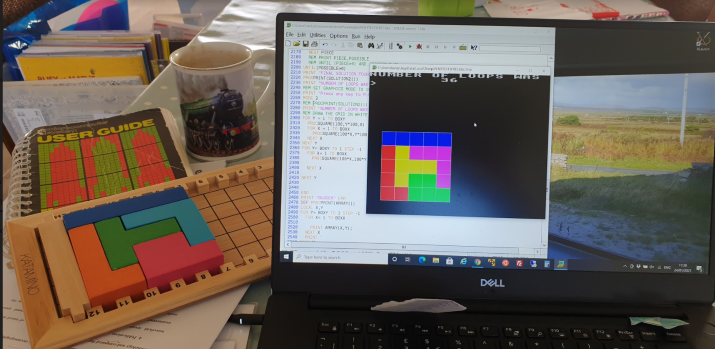
It works !! Moving on from the previous starting code.
- I added a routine which would select one of the possible solutions from those available. All possible solutions are found and stored. Currently we select a solution for each piece randomly, later we might select the possible solutions one by one or high grade the solutions based on some algorithms we might define to obtain quicker convergence. At the moment once a solution is selected for a given piece, we move onto the next piece. If no solution is found for the next piece then we go back to the beginning again. A final solution, and associated graphics, is only produced once a solution is produced for all 5 pieces. Currently when we go back to the beginning we restart the searches each time and carry on with random selections. This is a bit wasteful, but it will work eventually.
- I started with 3 pieces, with the first hard coded, and then checked the code such that solutions were found in the order 1,2,3 and 1,3,2. Next we freed up the first piece and tested orders 1,2,3 and 3,2,1. Ultimately all 12 pieces must be tested in random orders.
- Next we made the code slightly slicker, and moved onto four pieces. Interestingly, despite previous testing, this uncovered a bug in which piece 3 found no solutions but the code could carry on and find a solution for piece 4. The logic had to be changed slightly to get around this problem resulting in some messy, but working code.
- The final extension to 5 pieces was straightforward as was adding in the final screen graphics.
My 5 pieces are currently hard coded into orientations which I know will produce a solution for testing. The next level of complexity will be to add in rotations and reflections of the pieces. At the moment the piece shapes are hard coded – it would be possible to carry on with this method and hard code reflections and rotations for each piece. There are 63 possible combinations. I plan to investigate a more efficient way of storing the pieces in arrays and then using array manipulations to achieve the rotations where required. This will be the result of the next post.
Remember you can subscribe to the posts with a link to the right of the main post. I’m also experimenting linking these posts to my linkedin profile.
